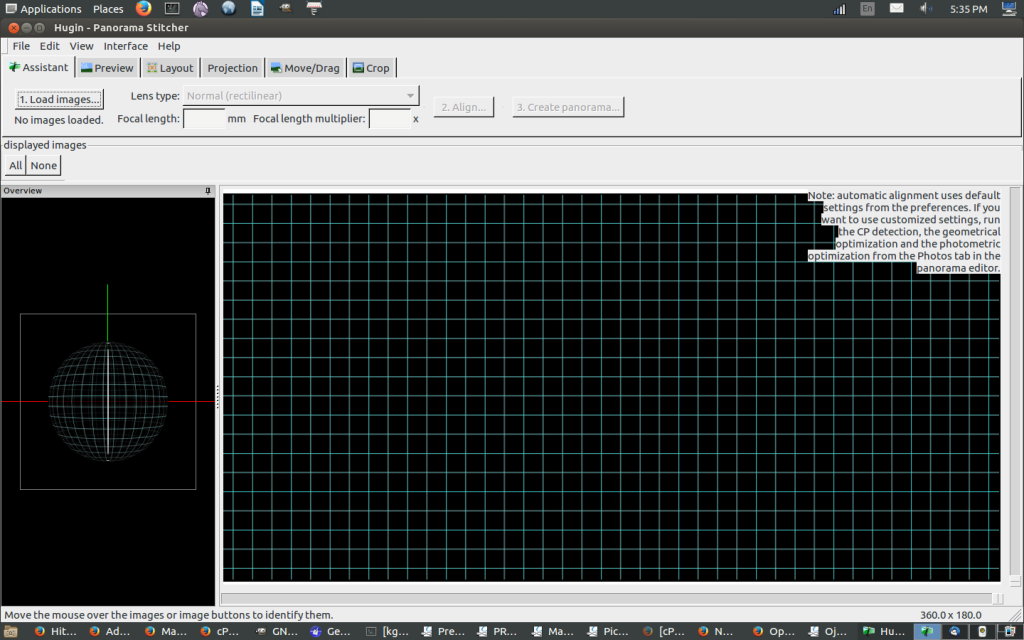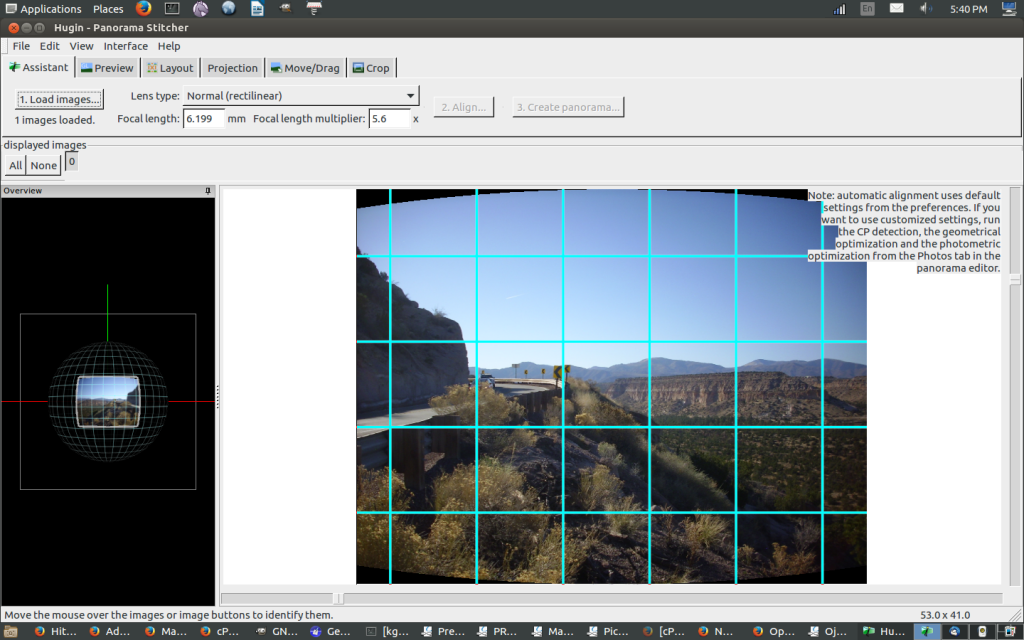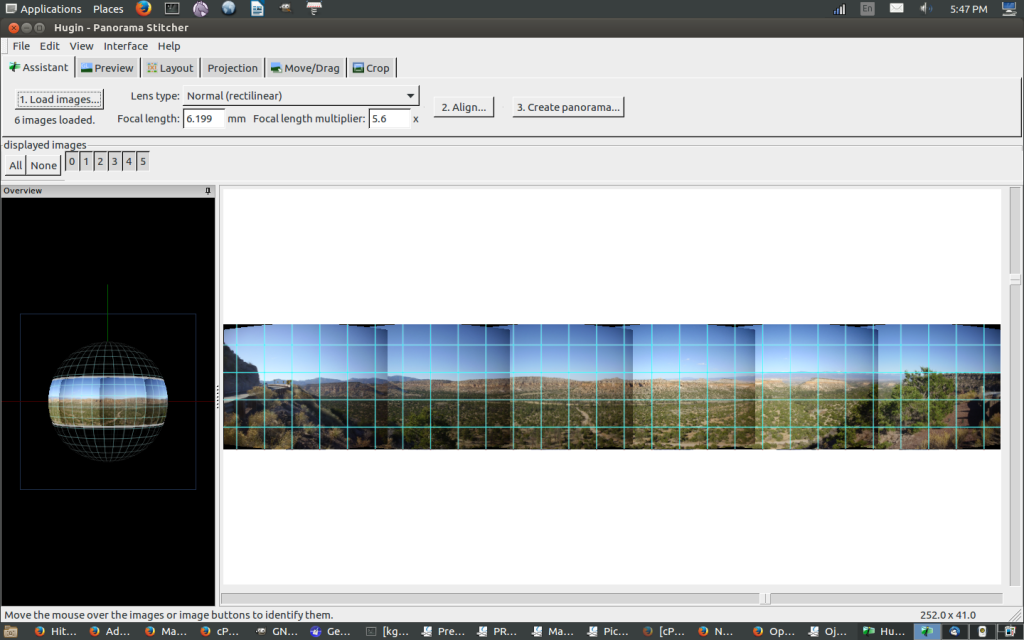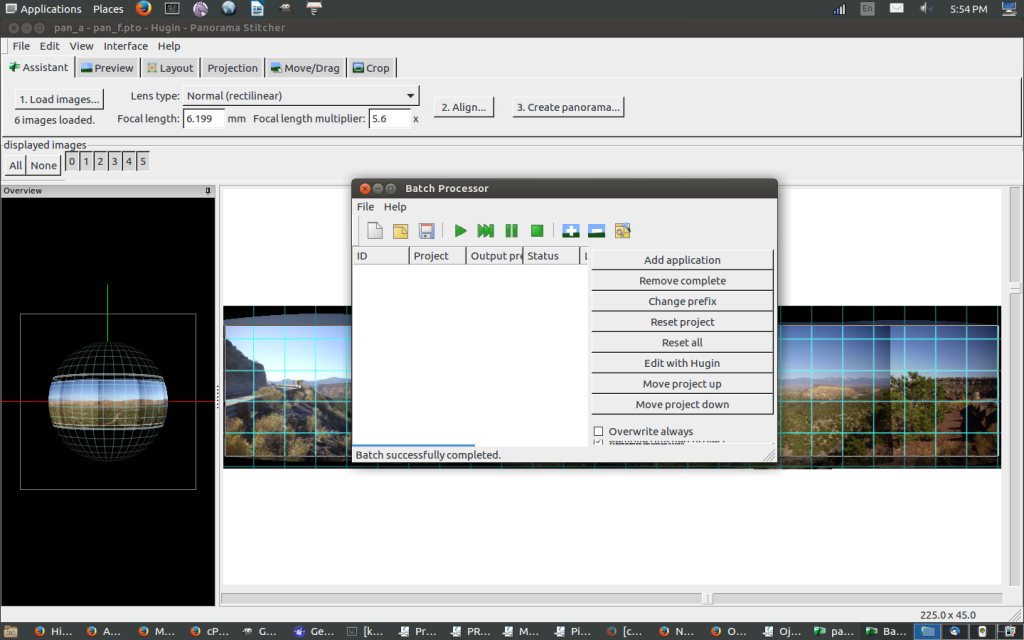A tip of the Wanderlust hat
To friend of the Wanderlust, Teejay, who nudged me into looking into software for stitching together photographs into a panorama.
It turns out that there is a pretty decent freeware package out there for Ubuntu, Hugin, which I tried out on some of my old panoramas. At its most basic, it’s pretty easy to use.
Here’s one of my old panoramas.
As with most images at this site, you can click for the full resolution image.
I fire up Hugin, and get a screen like this.
First easy step: Click on Load Images … and select the first image file from the file menu that comes up.
The first time I did this, I had to tell the program the focal ratio on my camera. It then mapped the images based on my having a fairly conventional rectilinear field of view and on the camera focal length stored as metadata in the image itself. Enter the rest of the images:
The program automatically guesses at how the photos align. This can doubtless be done manually if necessary but I haven’t had to yet.
Hit the Align… button, and a little window pops up showing a bunch of calculations; for this set of photos, which I did a good job of aligning when I took them, very little changes. Finally, the Create panorama … button, which pops up a dialog whose defaults all seem to work okay. You then get warned you have to save intermediate results, then you get two file dialogues for where to save these; I use my scratch directory and take the default file names. Once again, a window pops up showing lots of processing. You end up with a window I haven’t really figured out, except that it says “Batch processing successfully completed” in one corner, which sounds encouraging. You also have a TIF file in your scratch directory with the file prefix you selected a moment earlier.
And here’s the result.
Really not bad at all.
Let’s try a harder one. This has clouds in it, which moved slightly between frames.
This one seemed to crap out somewhere in the alignment phase:
Tried again with the first and last frames omitted.
Somewhat better. Conclusion: Garbage in, garbage out. The first panorama does very well because the individual frames were well-matched to begin with.
There seem to be ways to refine the process, but they’ll take a while to learn. Still. Nice tool.










